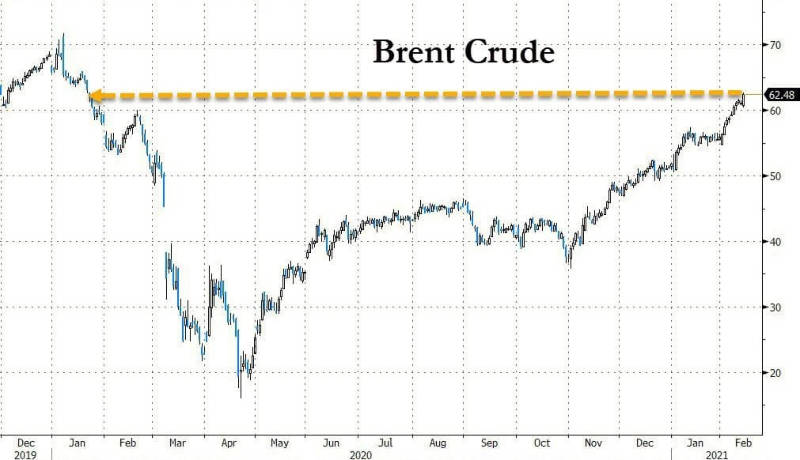Oil prices have been rising steadily since the announcement of successful COVID-19 vaccines in November last year with both oil benchmarks – the broader Brent Crude and the West Texas Intermediate – now past the $US60 ($77.23) per barrel mark.
This marks a critical point. There are many projects, such as US shale oil plays, that would be unprofitable below this point.
It also sparks the question of where oil prices are likely to go from here.
Goldman Sachs is settling in for the long haul with its head of commodity research Jeff Currie telling S&P Global Platts earlier this month that oil is being swept up in a commodity supercycle and has a lot of upside to its target price of $US65.
The US Energy Information Administration (EIA) has also increased its Brent and WTI forecasts from $US52.70/bbl and $US49.70/bbl to $US53.20/bbl and $US50.21/bbl respectively.
There is certainly room for oil prices to grow but the exact performance is dependant on several issues and some risk factors that could impact on near-term pricing.

To shale or not to shale
The higher oil price has rather predictably sparked an increase in US drill rig activity with oilfield services company Baker Hughes noting that nearly 300 rigs are now drilling, up from 172 in August 2020.
More shale oil companies are expected to jump on the bandwagon with Reuters flagging that the rig count could exceed 425 by the end of June if the current trend continues.
The EIA has also flagged further production gains of 640,000 barrels per day (bpd) by the end of 2020, an unsurprising result given that US producers have captured all the growth in global oil consumption each time the Brent averaged more than $US57/bbl over the last decade.
Importantly, the growing oil price and the prospect that US shale producers would nab any increase in consumption will put pressure on OPEC+ to either increase production or lose market share.
But it is not all rosy for the shale plays.
Supermajors ExxonMobil, Chevron and BP are collectively cutting up to 2.4 million bpd of future US oil shale production to focus on cash generation.
The collapse of companies such as Chesapeake Energy mid last year also serves as a warning to other shale oil producers about how dependent they are on oil prices remaining high in order to justify the high costs associated with extracting oil from shales.
Where the oil wind blows
There are a number of ways in which the oil picture can develop over the next months.
In perhaps the optimum scenario for oilies, demand for the fossil fuel grows substantially thanks to the COVID-19 vaccines being deployed successfully, which in turn fuels an increase in oil prices.
The increase in both demand and price is results in both shale oil producers and their OPEC+ rivals ramping up production that also serves to prevent the oil price from rising unchecked.
A key variation and one that a number of observers have noted is that the low oil prices have resulted in several major projects failing to receive investment decisions.
This could mean results in production not meeting demand, which leads to oil prices rising up towards or possibly beyond record levels.
Some traders are already anticipating a production shortfall this year, so this variation might well hold true, though OPEC+ may still have the capacity to moderate any increase.
In another scenario, demand fails to hit pre COVID-19 levels in the long-term, resulting in further delays to the investment decision for major projects.
This could have significant consequences on the ability of the oil industry from meeting demand, which could oddly lead to a runaway growth in oil prices.
While this could have short term benefits for the industry, the overly high prices could further accelerate the world’s move towards a low or carbon free energy mix that could result in a collapse in oil demand and prices in the longer term.
Other risks include a slower than expected rollout of vaccines, the increasing shift towards people working at least part of their time from home and the acceleration of renewable energy regardless of how oil prices move.
Any of these could either restrict further growth in or adversely impact oil prices.
It is still too early to tell which way the dice will fall in regards to oil prices, but the next couple of months will undoubtably signal which direction it will go.
You might be interested in












